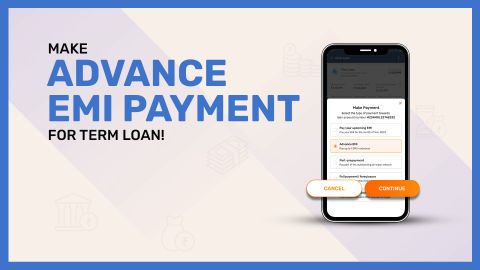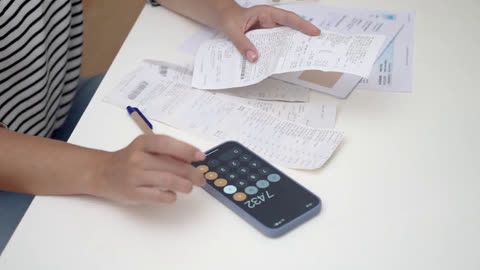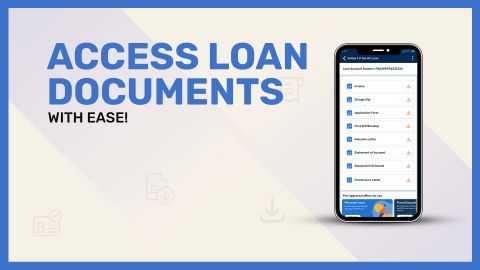Planning to bring home your dream bike? Understanding the EMI bank account details for a bike loan is an essential first step. When you apply for a two-wheeler loan, banks require specific account details to ensure smooth EMI (Equated Monthly Installment) payments. These details typically include your bank account number, IFSC code, and a signed NACH mandate or ECS authorisation allowing the lender to auto-debit your EMIs on a fixed monthly date. Submitting accurate and updated bank information not only prevents missed payments but also helps maintain a good credit score. Most lenders also allow you to choose a convenient EMI date and offer flexible repayment tenure ranging from 12 to 60 months. Additionally, your bank account must have a sufficient balance before the EMI due date to avoid penalties. This guide will walk you through everything you need to know about managing your EMI payments through your bank account.
Why change your EMI bank account details for bike loan?
There can be several practical and personal reasons why you might consider changing your EMI bank account details for a bike loan. Whether it’s due to a switch in your primary banking relationship, better account management, or simply convenience, updating your bank account ensures uninterrupted loan repayments and avoids unnecessary penalties or complications.
One of the most common reasons is changing jobs or locations, which may lead to the closure of an old salary account and the opening of a new one. In such cases, if your EMIs are still being debited from the old account, it can cause payment failures due to insufficient balance. Updating your EMI account details with the new bank ensures that auto-debits are processed smoothly without disrupting your repayment schedule.
Another valid reason could be the desire to consolidate your financial transactions into one bank for better control and tracking. By routing all major expenses, including EMI payments, through a single account, you can maintain better financial discipline, monitor balances, and avoid bounced payments.
Some borrowers also switch their EMI bank account to a bank that offers better digital banking services, zero balance requirements, or higher interest on savings. This can be beneficial in the long run, especially if your new bank provides timely alerts, user-friendly mobile apps, or improved customer service.
Additionally, updating your EMI account becomes necessary if your current account is compromised or blocked due to fraudulent activity. Continuing to use an insecure or inaccessible account for EMI payments could lead to missed EMIs and impact your credit score.
To change your bank account details, you typically need to submit a request to your lender, along with a cancelled cheque from the new account, a fresh NACH mandate, and valid ID proof. Once processed, the new account will be linked for future EMI deductions.
Timely updates of your EMI bank details help ensure smooth loan servicing and protect your financial reputation.
Steps to update EMI account information for bike loan
If you need to change your bank account for EMI payments on your bike loan, it's important to follow a structured process to avoid missed payments or penalties. Here are the step-by-step instructions to help you update your EMI account information smoothly:
Review your lender’s policy
Before initiating the process, check with your bank or NBFC (Non-Banking Financial Company) about their specific guidelines and required documents for updating EMI bank details.
Visit the lender’s branch or online portal
Depending on the lender, you may be able to initiate the request online through the customer portal or mobile app, or by visiting the nearest branch.
Fill out the bank account change request form
Collect or download the "EMI Bank Account Change Request Form" and fill in all required details such as loan account number, new bank account information, and reason for the change.
Provide a cancelled cheque from the new account
Attach a cancelled cheque from your new bank account to verify the account holder’s name, account number, and IFSC code.
Submit Updated NACH Mandate or ECS Authorisation
Complete a new NACH (National Automated Clearing House) mandate or ECS (Electronic Clearing Service) form to authorise the lender to auto-debit the EMIs from your new account.
Submit supporting KYC documents
Provide a copy of a valid ID proof (like Aadhaar, PAN, or driver’s license) to authenticate the request.
Wait for verification and processing
The lender will verify your documents and update your account information in their system. This process may take 5–10 working days.
Continue EMI payments from old account until confirmation
Keep a sufficient balance in your old account for EMI payments until you receive written or email confirmation that the new account has been updated and is active for deductions.
Confirm the update with customer support
Once you receive the update confirmation, call or email customer care to verify the successful change and the effective date.
Monitor your new account for EMI debits
After the switch, keep track of EMI deductions from the new account to ensure everything is functioning correctly.
Updating your EMI account details on time helps you maintain a smooth loan repayment schedule without any disruptions.
Common issues while changing EMI bank account details
Changing your EMI bank account details for a bike loan may seem like a straightforward process, but it can come with a few challenges. Here are some common issues borrowers face during the update:
Delayed processing by the lender
Financial institutions may take several working days to process the change, during which EMI deductions may still occur from the old account.
Incomplete or incorrect documentation
Submitting forms with errors or missing required documents (like a cancelled cheque or ID proof) can lead to rejection or delays in the update process.
NACH mandate rejection
If the new NACH or ECS mandate form is filled incorrectly or not verified by the new bank, it may be rejected, causing issues with EMI auto-debits.
Lack of communication from the lender
Sometimes lenders do not provide timely confirmation or updates, leaving borrowers uncertain about the status of their request.
EMI bounced due to insufficient funds
If the old account has insufficient balance during the transition period, the EMI may bounce, resulting in penalties and a negative impact on your credit score.
Technical glitches in online portals
Some lenders may experience portal errors or downtime, making it difficult to submit or track the request online.
Signature mismatch
A mismatch between your signature on the NACH mandate and the bank’s records can result in a rejected request.
Failure to inform all relevant departments
If the request is not properly updated across departments (e.g., collections or IT), auto-debits might still be attempted from the old account.
No EMI debit on scheduled date
Even after approval, some borrowers face a missed auto-debit on the EMI due date due to internal processing delays.
Difficulty in reaching customer service
In case of issues or delays, some borrowers find it hard to get real-time assistance from customer support.
Being aware of these issues can help you take proactive steps, such as double-checking forms, keeping sufficient balance in both accounts, and following up regularly with your lender.
Online process for updating EMI bank account details
Updating your EMI bank account details online for a bike loan is a convenient and time-saving option offered by many lenders. Here is a step-by-step guide to help you through the process:
Log In to the lender’s customer portal or app
Visit the official website or open the mobile app of your lender and log in using your registered credentials (user ID and password or mobile OTP).
Navigate to the loan account section
Go to the section that displays your active bike loan account and select the option related to EMI or repayment settings.
Select the ‘Update Bank Account’ option
Look for the feature that allows you to update or change your existing bank account details for EMI payments.
Enter new bank account information
Carefully enter the new account number, IFSC code, and bank name. Ensure accuracy to avoid transaction failures.
Upload required documents
Upload a scanned copy of a cancelled cheque from the new account and valid identity proof such as Aadhaar, PAN, or driver’s license.
Fill and submit NACH mandate form
Some portals will require you to download, fill out, and digitally sign a NACH mandate form. This authorises the lender to auto-debit your EMIs from the new account.
Verify through OTP or e-signature
Complete the process by verifying your request using an OTP sent to your registered mobile number or email. In some cases, an e-signature may be needed.
Confirmation message or email
Once the request is submitted, you’ll receive a confirmation message or email with a reference number for tracking the status.
Track the status online
Use the portal or app to monitor the status of your request. Processing usually takes 5–7 working days.
Maintain sufficient balance in both accounts
Until you receive final confirmation, keep sufficient funds in your old bank account to avoid EMI bounce charges.
This online method offers flexibility, real-time updates, and reduces paperwork, ensuring a smooth transition for EMI payments.
Offline process for changing EMI bank account details
If you prefer traditional methods or your lender does not offer an online option, you can update your EMI bank account details through the offline process. Here are the step-by-step instructions:
Visit the nearest branch of the lender
Go to the nearest branch of the bank or financial institution where your bike loan is active.
Request for the bank account change form
Ask for the specific form required to update or change your EMI bank account details.
Fill in the required details accurately
Complete the form with your loan account number, new bank account number, IFSC code, and personal information. Any errors can delay the update process.
Attach a cancelled cheque from the new account
Submit a cancelled cheque to verify the new bank account’s credentials and ownership.
Submit a new NACH or ECS mandate form
Fill out a fresh NACH (National Automated Clearing House) or ECS (Electronic Clearing Service) form to authorize automatic EMI deductions from the new account.
Provide valid KYC documents
Attach copies of valid ID and address proof (such as Aadhaar card, PAN card, or voter ID) as part of the verification process.
Submit the complete document set to bank official
Hand over the form along with all supporting documents to a bank representative for processing.
Collect the acknowledgement receipt
Always ask for an acknowledgement or reference number for your request. This helps in tracking the status later.
Wait for processing and confirmation
The lender may take 5–10 business days to verify and update your EMI bank details. You will be notified once the update is completed.
Keep balance in old account until confirmation
Ensure your old bank account has enough balance for EMI deductions until the switch is confirmed, to avoid missed payments or penalties.
Following this offline process ensures that your EMI payments continue smoothly without disruption or late fees.
Documents required for EMI bank account details update
To successfully update your EMI bank account details for a bike loan, you’ll need to submit a few important documents. These documents help your lender verify your identity, validate the new account, and authorise the updated auto-debit instructions. Here’s a list of the key documents required:
Bank account change request form
A duly filled and signed form provided by the lender to initiate the update request.
Cancelled cheque of the new bank account
A cancelled cheque is necessary to confirm the new account number, IFSC code, and account holder’s name.
NACH mandate or ECS form
This is used to authorise the lender to auto-debit EMIs from your new bank account.
KYC documents
Submit a self-attested copy of your valid identity proof, such as:
Aadhaar Card
PAN Card
Voter ID
Passport
Driving License
Proof of address (if requested)
In some cases, an updated address proof may be needed along with ID documents.
Loan account number details
Mention your loan account number clearly on the form to help the lender link the request correctly.
Email or SMS confirmation (optional)
Some lenders might ask for a screenshot or printed copy of the email/SMS confirmation related to your loan for verification.
Before submitting your documents, ensure all information is accurate and matches the lender's records. Also, consider checking how to check my outstanding loan balance to stay updated on your dues during the transition. This helps you avoid any missed EMIs while the new account details are being processed.
Documents required for EMI bank account details update
To successfully update your EMI bank account details for a bike loan, you’ll need to submit a few important documents. These documents help your lender verify your identity, validate the new account, and authorise the updated auto-debit instructions. Here’s a list of the key documents required:
Bank account change request form
A duly filled and signed form provided by the lender to initiate the update request.
Cancelled cheque of the new bank account
A cancelled cheque is necessary to confirm the new account number, IFSC code, and account holder’s name.
NACH mandate or ECS form
This is used to authorise the lender to auto-debit EMIs from your new bank account.
KYC documents
Submit a self-attested copy of your valid identity proof, such as:
Aadhaar Card
PAN Card
Voter ID
Passport
Driving License
Proof of address (if requested)
In some cases, an updated address proof may be needed along with ID documents.
Loan account number details
Mention your loan account number clearly on the form to help the lender link the request correctly.
Email or SMS confirmation (optional)
Some lenders might ask for a screenshot or printed copy of the email/SMS confirmation related to your loan for verification.
Before submitting your documents, ensure all information is accurate and matches the lender's records. Also, consider checking how to check my outstanding loan balance to stay updated on your dues during the transition. This helps you avoid any missed EMIs while the new account details are being processed.
Conclusion
Updating your EMI bank account details for a bike loan is a crucial step to ensure uninterrupted payments and maintain a healthy credit score. Whether you choose the online or offline process, providing accurate information and the required documents is essential. Be proactive in tracking the status of your request and maintain sufficient funds in your existing account until the change is confirmed. Staying informed about your loan account and EMI schedules can prevent delays and penalties.




